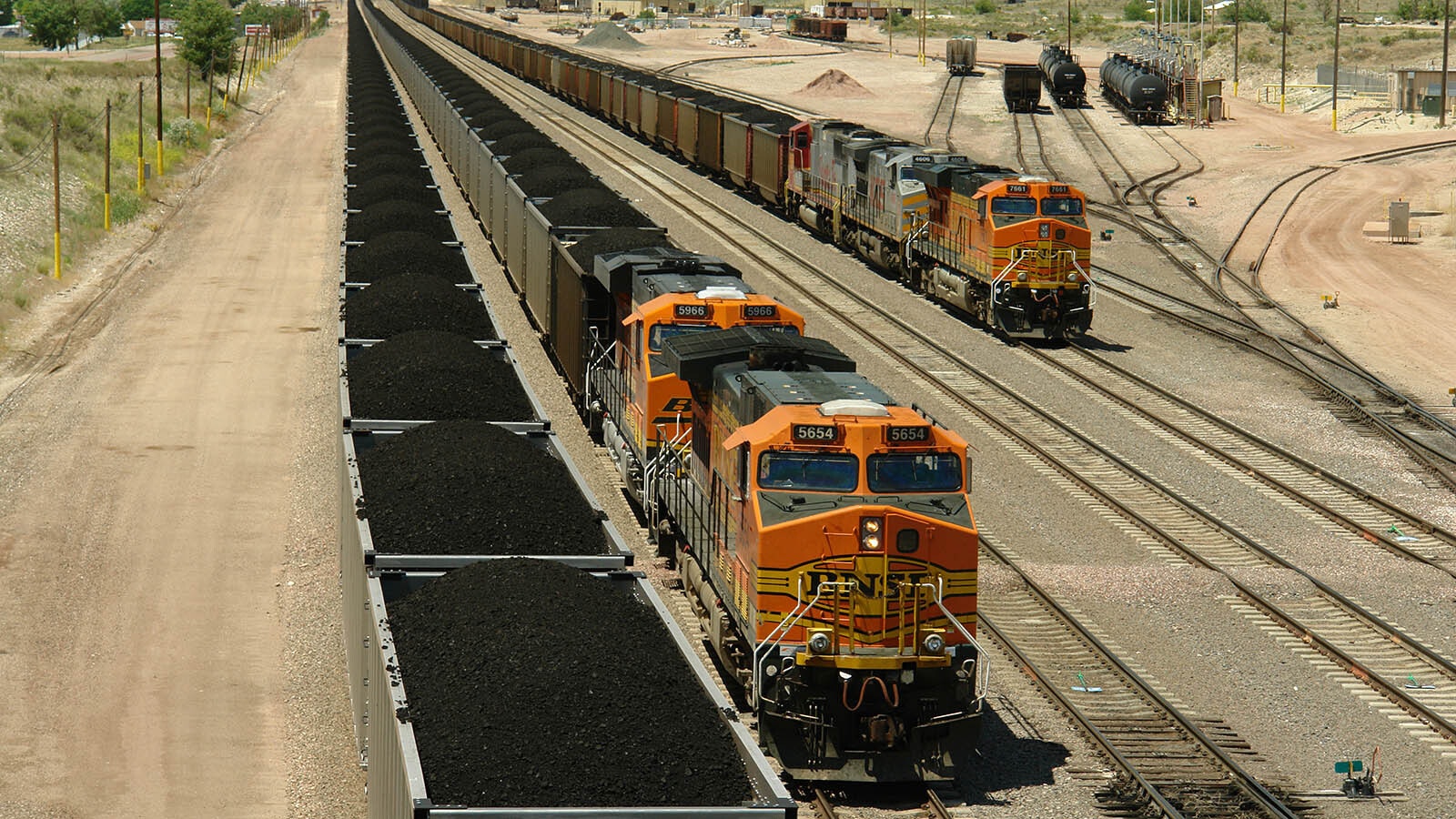Wyoming’s coal market has suffered devastating layoffs and mine closures in recent years, and by all accounts, the industry is shrinking.
But, what if it dried up overnight?
“If you were to instantly remove the coal industry, it would immediately cause job losses across the state,” said Robert Godby, the University of Wyoming director for Energy Economics and Public Policies Center and college of business associate professor. “You’re looking at about 5,000 miners directly involved in the coal industry. If you were to lose that all at once, people would feel that.”
It’s not just the miners, either. Godby said a sizable chunk of Wyoming’s labor market is reliant on coal.
“Approximately, there’s about 10,000 jobs directly or indirectly related to the coal industry — mining, electricity generation, railroads, plus all the businesses reliant on those workers’ wages,” he explained. “As coal declines in the state, we’ll have to transition those workers to other industries. And, there will not be enough jobs to absorb those workers.”
The good news, Godby said, is coal won’t disappear that quickly, but it could taper off sooner than Wyoming is prepared for.
“In 2015, there were almost 5,600 miners in Powder River Basin, now there’s 4,400,” he said. “There are 12 mines up there that produce about 40 percent of the country’s coal. We could be below half of what we were producing in 2009 by the mid-2020s.”
High-paying careers
Data from the Department of Wyoming Workforce Services indicates once these workers lose gainful employment, many leave the state to work in the field elsewhere.
But, across the nation, there are fewer jobs for coal workers and retraining for other careers can mean starting all over.
“Those jobs pay really well,” Godby said. “It’s not only difficult to absorb and replace all those jobs, but you won’t be able to find jobs that pay nearly as well.”
The average income for a coal industry employee is about $80,000 a year, he said.
“The people who stay, if those jobs were to disappear, may have to do something else,” Godby said. “Many of those workers may have to accept the fact that unless they go back to school, retrain or re-skill, they won’t find jobs that pay as well.”
When a layoff occurs in any industry, Workforce Services deploys a rapid response team, agency spokesperson Ty Stockton said.
“In Wyoming, we don’t have very many businesses that have 600 employees that could get laid off,” Stockton explained. “We don’t have a real threshold for deploying the team. When Laramie County Community College (LCCC) laid off 17 employees in 2016, they went in for that.”
A team was also sent out in 2016 when about 500 workers were laid off from the North Antelope Rochelle and Black Thunder mines in Campbell County. More recently, Workforce Services deployed a rapid response team to Gillette when Blackjewel, LLC, abruptly laid off about 600 workers at the Belle Ayr and Eagle Butte mines in Campbell County.
“Rapid response is about giving those folks options and information,” Stockton said. “If they don’t have information, there’s nothing they can do.”
Teams can include mental health counselors, Wyoming Department of Family Services staff to help families, Wyoming Department of Health staff to help with health insurance questions and Workforce Services employees to discuss unemployment options and help laid off workers start the search for their next job, he said.
‘Generation of pain’
But all of those are stop-gap measures designed to lessen the blow to recently out-of-work families.
In the long term, Workforce Services also provides funding for a number of vocational rehabilitation programs.
“We’re trying to keep (the workers) here and give them some options,” Stockton said.
The agency has access to about $2 million for retraining coal workers through the Partnerships for Opportunity and Workforce Economic Revitalization Grant, aka the POWER Grant.
“The only people eligible for the POWER Grant are the primary industries associated with coal-fired power plants and the coal mines,” Stockton explained. “But we also have the Workforce Innovation and Opportunity Act, and that covers everybody.”
Additionally, Workforce Services helps fund some apprenticeship programs through grants.
“Training an apprentice is expensive,” Stockton said. “The apprenticeship program was set up to help offset those costs, so if you need a few apprentices, you can apply for these grants and have their training paid for through the apprenticeship grant.”
About 80 trainees are currently enrolled in apprenticeship programs for electrical, plumbing and heating and cooling careers at LCCC and Northwest College, he said.
Even with training programs already in place, Godby said recovery from the loss of an industry as big as coal would take years.
“To transition a labor force to work on anything else is going to take about at least about a decade,” he explained. “If we look at other industries like the furniture industry in the Southeast, soft wood lumber in the Pacific Northwest and the industrial decline in the Midwest, those transitions typically take a generation to overcome. That’s a generation — 20 to 30 years — of pain.”





